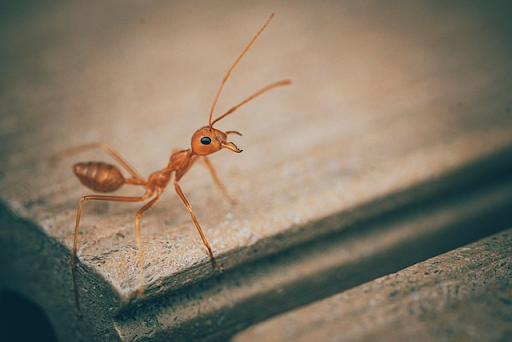If you live anywhere in Australia, trails of ants will be a common site around your garden and sometimes inside your home. The majority of ants are harmless and are more of a hindrance in your pristine home or garden. However, some species such as carpenter and pharaoh ants can spread disease and cause damage to your home.
It’s not uncommon for homeowners to opt for home pest control measures to rid their homes of all types of ants. In addition to relying on professional solutions to keep your home pest-free, you can also take a few precautionary steps to prevent these pesky creatures from moving in.
What’s the Problem With Ants?
The number one reason to get rid of ants in your home is because they can contaminate food and damage property. Carpenter ants have been known to bore into the timber beams that are used in Australian homes. When this happens, they can damage the structural integrity of your home. Significantly large colonies can also tunnel through walls and floors.
Worker ants can also cause damage to wires and cables, resulting in malfunctions. Ants don’t carry disease, but they can easily spread pathogenic bacteria. This is because they crawl over everything and through all kinds of things, they can easily spread germs and disease to any foods and counters they cross. Other ants, such as fire ants, can bite or even sting when they are touched, or their nests are disturbed.
Excessive ant colonies can also damage gardens by building nests in unwanted areas and disturbing plant roots. Tunneling can also cover delicate seedlings in their early growth stages. Their extensive underground nests also damage delicate roots, causing them to dehydrate.
A Few Simple Tips to Try
There are several simple tips you can implement around your home to keep ants from nesting inside. Keeping them out altogether also limits the likelihood of them contaminating food and surfaces.
Remove Potential Food Sources
Ants of all species will ever only move into your home if they have easy access to food. Crumbs, food scraps, and open candies are top attractors. This is why ants are most common in areas such as kitchens, pantries, and dining rooms.
Clean up spills and crumbs immediately and be sure to wipe down surfaces such as tables and counters. Empty garbage bins and ensure that composters are securely closed. Sweep floors and outside spaces to remove any crumbs or scraps they may find appealing.
Eliminate Easy Water Sources
Ants are as attracted to water as they are to food. Like many other pests and animals, they would prefer to stay near an area with continuous water flow. Common examples of this include dripping taps, leaking pipes, or pet water bowls. Repair leaks and drips and keep areas around drains clean. Move your dog’s water bowl to a different location.
Look for Potential Access Points
If you see ants in your home, you should take a few minutes to follow them around to determine where they are coming from. This should be quite easy since most ants tend to walk in a straight line from their food source to their entry point.
You will often find that they are coming into your home through a crack in the wall or skirting boards. Where possible, fill these holes with sealant. Check the surrounding ceilings, windows, and door screenings for openings. Keeping these sealed will help keep ants from finding easy access to your home.
It’s important to wash the areas where you have seen ants. Worker ants would already have laid a trail for others to follow. Not removing the trail will only see new ants back on the same path in a few days. You can use a water and vinegar solution to clean the area. Cleaning products that contain citrus or peppermint oil have also been known to deter ants.
Call the Professionals
When you’ve cleaned, repaired, and removed everything that makes ant entry easy and you’re still seeing them all over your kitchen counters, it may be time to call the professionals. Pest controllers are experts at safely eradicating all types of insects including ants.
Experts will use environmentally friendly solutions that won’t harm people or animals. They will also tailor a solution to suit the type of ant species you’re dealing with. The pesticide will be sprayed at entry points and in the areas where you have seen the ants most frequently.
Pest controllers are experienced in identifying signs of ant colonies and will in the process also check for other pests that could cause a potential risk. Solutions are regulated, meaning you don’t have to worry about illegal or harmful pesticides being used. Getting rid of harmful ants has never been easier.
Final Thoughts
Not all ants are harmful but since you have no way of knowing what pathogens they’re carrying on their feet, you shouldn’t allow them into your home in the first place. Use our tips combined with professional pest control solutions to keep your home as ant-free as possible.










